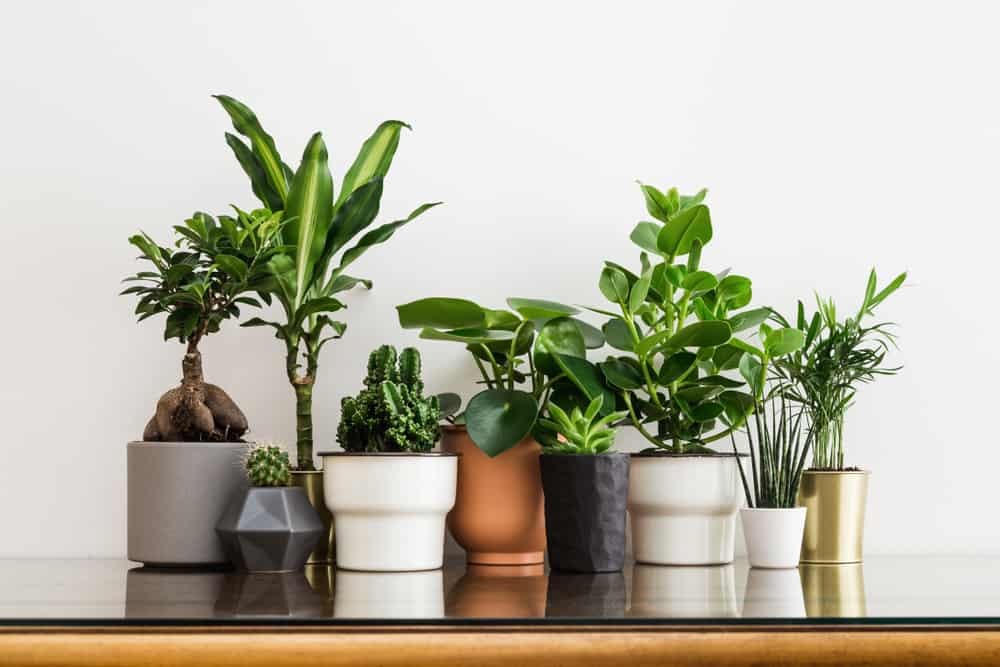Introduction: Indoor gardening is a wonderful way to bring nature into your home and improve air quality, while adding a touch of beauty and tranquility. With so many plant options available, it can be overwhelming to decide which ones to include in your personalized indoor garden. To help you make the right choice, we’ve compiled a list of six diverse plant types, each offering unique characteristics and benefits to suit different preferences and indoor environments.
Contents
Air-Purifying Plants:
If you’re looking to improve the air quality in your home, consider incorporating air-purifying plants into your indoor garden. These plants are known for their ability to remove toxins and pollutants from the air, making your living space healthier and more breathable. Some popular air-purifying plants include:
- Spider Plant (Chlorophytum comosum): This easy-to-grow plant is ideal for beginners and adapts well to various lighting conditions. It’s particularly effective at removing formaldehyde, benzene, and xylene from the air.
- Snake Plant (Sansevieria trifasciata): With its tall, upright leaves, the snake plant is a striking addition to any indoor garden. It’s also one of the best plants for removing toxins and producing oxygen at night.
- Rubber Plant (Ficus elastica): With its large, glossy leaves, the rubber plant is a striking addition to any indoor garden. It’s effective at removing toxins such as formaldehyde and trichloroethylene from the air. To maintain its health, provide bright, indirect light and water it when the top inch of the soil dries out.
- Bamboo Palm (Chamaedorea seifrizii): This elegant palm adds a tropical touch to your indoor space while effectively filtering toxins like benzene, formaldehyde, and trichloroethylene. It prefers bright, indirect light and consistently moist soil, making it perfect for rooms with ample natural light and moderate humidity.
Low-Maintenance Plants:
If you don’t have a green thumb or simply want plants that require minimal care, there are plenty of low-maintenance options to choose from. These plants can thrive with little attention, making them perfect for busy individuals. Some great low-maintenance plants include:
- ZZ Plant (Zamioculcas zamiifolia): This hardy plant is known for its ability to tolerate low light and infrequent watering, making it an ideal choice for those who might not have the time to care for more delicate plants.
- Pothos (Epipremnum aureum): With its trailing vines and heart-shaped leaves, pothos is a lovely addition to any indoor space. It’s easy to care for, adaptable to various light conditions, and can even be propagated in water.
- Cast Iron Plant (Aspidistra elatior): True to its name, the cast iron plant is known for its ability to withstand less-than-ideal conditions, including low light and neglect. Its dark green leaves add a touch of lushness to your indoor garden. Water it sparingly, as it’s more susceptible to root rot from overwatering than other indoor plants.
- Dracaena (Dracaena spp.): With their spiky, arching leaves and various color patterns, dracaenas are an eye-catching option for your indoor garden. They can adapt to a range of light conditions, but prefer indirect, bright light. Keep their soil slightly moist, and be cautious of fluoride in tap water, which can cause leaf tip burn.
Flowering Plants:
If you want to add a pop of color and fragrance to your indoor garden, flowering plants are the way to go. These plants produce beautiful blooms and can liven up any space. Some popular flowering plants for indoor gardens include:
- African Violet (Saintpaulia): These compact plants produce stunning, velvety blooms in a range of colors, from deep purples to delicate pinks. They prefer bright, indirect light and consistent moisture.
- Peace Lily (Spathiphyllum): With its elegant white flowers and glossy green leaves, the peace lily is a popular choice for indoor gardens. It’s also an air purifier, helping to remove toxins from your home.
- Anthurium (Anthurium andraeanum): Also known as flamingo flower, anthurium features stunning, heart-shaped blooms in shades of red, pink, or white. It prefers bright, indirect light and consistently moist soil. Maintain high humidity by placing it on a tray filled with pebbles and water or using a humidifier.
- Moth Orchid (Phalaenopsis spp.): These elegant orchids produce long-lasting, colorful blooms, making them a popular choice for indoor gardeners. Moth orchids prefer bright, indirect light and consistent moisture, with a slight drying period between waterings. Provide ample humidity and be patient, as they can take time to rebloom.
Edible Plants:
Why not grow your own indoor edible garden? Many herbs, vegetables, and fruits can be successfully grown indoors, providing you with fresh, organic produce right at your fingertips. Some great edible plants to consider include:
- Herbs: Basil, mint, parsley, and chives are all excellent choices for an indoor herb garden. They’re easy to grow and can be harvested regularly for culinary use.
- Microgreens: These nutrient-packed greens can be grown quickly and easily in a small space, making them ideal for urban dwellers or those with limited room for a full-sized garden.
- Dwarf Fruit Trees: Lemon, lime, and fig trees are just a few examples of fruit trees that can be grown indoors. Select a dwarf or semi-dwarf variety for more manageable growth. These trees need ample sunlight, so place them near a sunny window and rotate them regularly for even exposure.
- Salad Greens: Lettuces, spinach, and arugula are excellent options for growing your own indoor salad garden. They thrive in bright light and can be grown in shallow containers or window boxes. Harvest leaves as needed, and you’ll have a continuous supply of fresh greens throughout the year.
Succulents and Cacti:
For a touch of desert flair, consider adding succulents and cacti to your indoor garden. These plants are known for their unique shapes, textures, and colors, and they require minimal care, making them a great choice for any indoor space. Some popular succulents and cacti to consider include:
- Echeveria: With their rosette-shaped leaves in a variety of colors and sizes, echeverias are a favorite among succulent enthusiasts. They thrive in bright, indirect light and require infrequent watering.
- Barrel Cactus (Ferocactus): This iconic cactus is known for its rounded shape and large, curved spines. It’s an excellent option for adding a touch of desert charm to your indoor garden, as it can tolerate low humidity and infrequent watering.
- Aloe Vera (Aloe barbadensis): This versatile succulent is not only attractive but also offers numerous medicinal benefits, such as soothing burns and cuts. Aloe vera prefers bright, indirect light and well-draining soil. Water it thoroughly and allow the soil to dry out between waterings.
- Christmas Cactus (Schlumbergera spp.): Known for its vibrant, tubular blooms that appear during the holiday season, the Christmas cactus is a festive addition to your indoor garden. It prefers bright, indirect light and consistent moisture. Unlike most cacti, it thrives in slightly more humid conditions.
Ferns and Mosses:
For a lush, tropical feel, consider incorporating ferns and mosses into your indoor garden. These plants thrive in humid conditions and can add a sense of serenity to your space. Some great ferns and mosses to consider include:
- Boston Fern (Nephrolepis exaltata): This popular fern features delicate, arching fronds that can create a sense of movement in your indoor garden. It prefers medium to bright indirect light and consistent moisture.
- Marimo Moss Balls (Aegagropila linnaei): These unique, spherical mosses are actually a type of algae that can grow in low-light conditions. They’re perfect for adding a touch of whimsy and low-maintenance greenery to your space.
- Staghorn Fern (Platycerium spp.): This unique, epiphytic fern features antler-like fronds that make it a stunning addition to your indoor garden. Staghorn ferns can be mounted on a wooden plaque or grown in a hanging basket, providing a dramatic visual element. They prefer bright, indirect light, and high humidity. Water them by soaking their base or misting regularly.
- Java Moss (Taxiphyllum barbieri): This versatile aquatic moss can be used in terrariums, aquariums, or even as a decorative element in your indoor garden. Java moss thrives in low to medium light and enjoys high humidity. It can be attached to rocks, driftwood, or mesh to create a lush, green carpet, or left to float freely in water for a more organic look.
Conclusion:
Creating a personalized indoor garden is an exciting and rewarding experience, allowing you to curate a collection of plants that suit your preferences and home environment. By considering the diverse plant options listed above, you can design an indoor garden that not only enhances your living space but also provides numerous benefits, such as air purification, relaxation, and even a source of fresh produce. Don’t be afraid to experiment with different plant combinations and arrangements, as this will help you create a truly unique and thriving indoor oasis.

